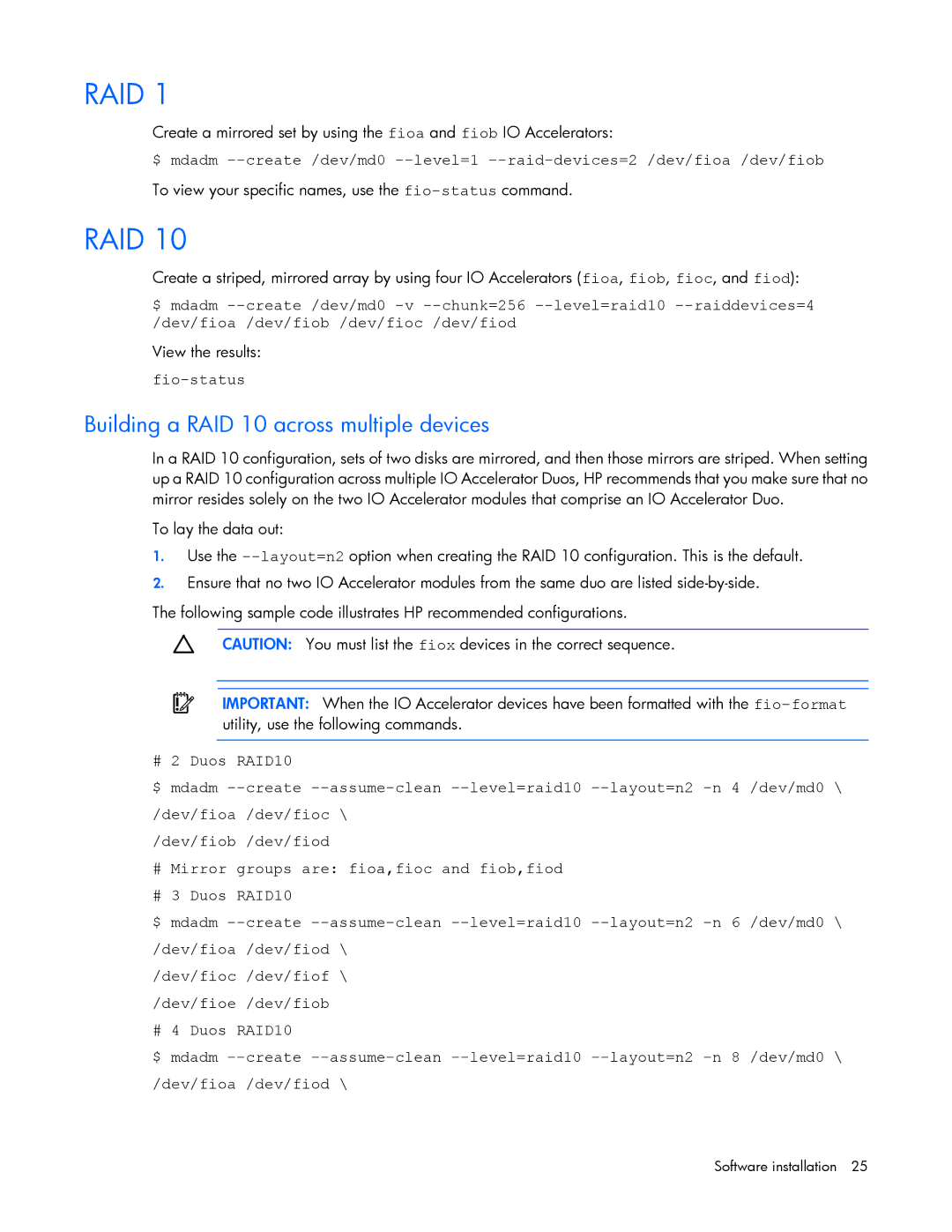
RAID 1
Create a mirrored set by using the fioa and fiob IO Accelerators:
$ mdadm
To view your specific names, use the
RAID 10
Create a striped, mirrored array by using four IO Accelerators (fioa, fiob, fioc, and fiod):
$ mdadm
View the results:
fio-status
Building a RAID 10 across multiple devices
In a RAID 10 configuration, sets of two disks are mirrored, and then those mirrors are striped. When setting up a RAID 10 configuration across multiple IO Accelerator Duos, HP recommends that you make sure that no mirror resides solely on the two IO Accelerator modules that comprise an IO Accelerator Duo.
To lay the data out:
1.Use the
2.Ensure that no two IO Accelerator modules from the same duo are listed
The following sample code illustrates HP recommended configurations.
CAUTION: You must list the fiox devices in the correct sequence.
IMPORTANT: When the IO Accelerator devices have been formatted with the
# 2 Duos RAID10
$ mdadm
/dev/fiob /dev/fiod
#Mirror groups are: fioa,fioc and fiob,fiod
#3 Duos RAID10
$ mdadm
/dev/fioc /dev/fiof \ /dev/fioe /dev/fiob
# 4 Duos RAID10
$ mdadm
Software installation 25
